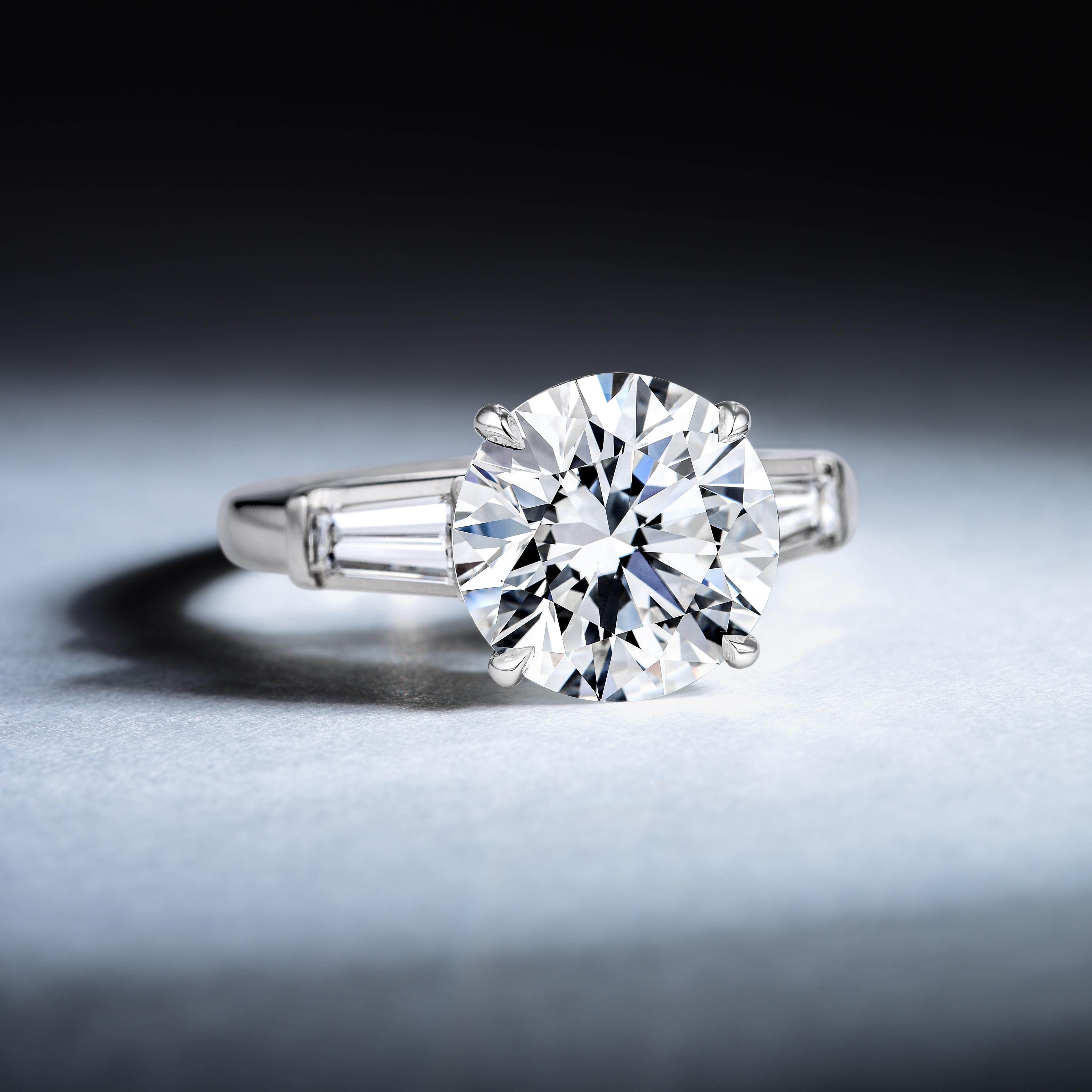
What is the Worth of a Diamond?
Almost all diamonds share similar traits. They sparkle. They delight. They adorn. Yet, to a jewelry investor or a gemstone collector, each diamond has a specific value that transcends its natural beauty.
Auction consignors and their preferred auction houses must, therefore, determine the market value of every diamond. However, approximating a diamond’s likely selling point involves digging deeper into the diamond itself. Below are some of the factors that help indicate how much a diamond is worth within a national or global marketplace.
Evaluating the 4Cs of a Diamond
Most diamond owners or buyers have heard of the 4Cs: Cut, Clarity, Carat weight and Color. Gemologists and jewelers lean on these four factors to help them define a diamond.
Without the 4Cs, which were established nearly 70 years ago, diamonds would be challenging to differentiate objectively. The 4Cs provide a solid platform that everyone can agree upon. For instance, the color of a diamond has a strong impact on its worth. Usually, the closer to colorless a diamond is, the more highly it is prized. Therefore, a truly or practically clear diamond will have a better color grade than one with a yellowish tint. However, the color isn’t always bad. The general rule of thumb is, if a diamond is colored, the more intense the color the better.
Getting a lab report from the Gemological Institute of America (GIA) that confirms the 4Cs may also do wonders in improving the diamond’s market value. The GIA report will show the quality and characteristics of the diamond, which confirms the worth and value of that diamond in the eyes of professional buyers. Yet because of the costs that go into getting a professional lab report, it is always best to consult a professional appraiser first before contacting GIA.
Although the 4Cs alone do not make up the full value of a diamond, they present a solid starting point. Individuals who own diamonds and want to sell them at auction can always count on being asked to verify the 4Cs of their diamonds. That way, potential buyers understand the type of diamond they are going to bid on during the auction proceedings. Only certified diamond grading professionals can create an authentic diamond grading report.
Keep in mind that all diamonds should be natural when someone is assessing their value. Lab-manufactured or laser drilled diamonds have an artificially improved appearance and clarity, which lowers the value of the diamond.
Considering the Rarity of a Diamond
After pinpointing where a diamond falls in terms of the 4Cs, the diamond can then be evaluated for its rarity. In other words, how difficult would it be to find a diamond precisely like this one?
A great example of a rare diamond would be one that meets the highest standards of all the 4Cs. These types of flawless diamonds do not come up for auction all the time, and collectors realize that. When a rare diamond comes onto the auction block, it usually elicits quite a bit of stir from eager buyers. When it comes to colored diamonds, however, amongst the rarest would be fancy colors such as pink, purple, and blue diamonds.
Though the starting bid for a rare diamond should be conservatively set, the selling price may go much higher. The reason? Each bidder looks at the basic value of the diamond, and then adds a personal premium for owning the rare gemstone. Again, this is what makes diamond auctions so exciting — diamond values and rarities can be somewhat subjective and at times unpredictable.
Looking at Historical Significance to Gauge the Worth of a Diamond
Another interesting way that people judge the worth of a diamond is by its history. The Hope Diamond comes to mind as a diamond unparalleled in its historical significance. Of course, any diamond can be important from a historical perspective, especially for collectors who focus on purchasing diamonds from a specific period.
In general, documentation should accompany any diamond with supposed historical significance. Documents, including images, help assure investors that the diamonds they want to buy have an impressive and traceable lineage.
Using the Market as a Litmus Test for Diamond Value
As a final note on diamonds and their worth, the marketplace and general economic factors will always have some impact on the selling price for any fine jewelry and gemstones. Nevertheless, expert auction house representatives can usually set a diamond’s worth accurately based on their experience.
Do you have a diamond you want to sell at auction? Contact FORTUNA® to set up your free diamond or gemstone appraisal.
